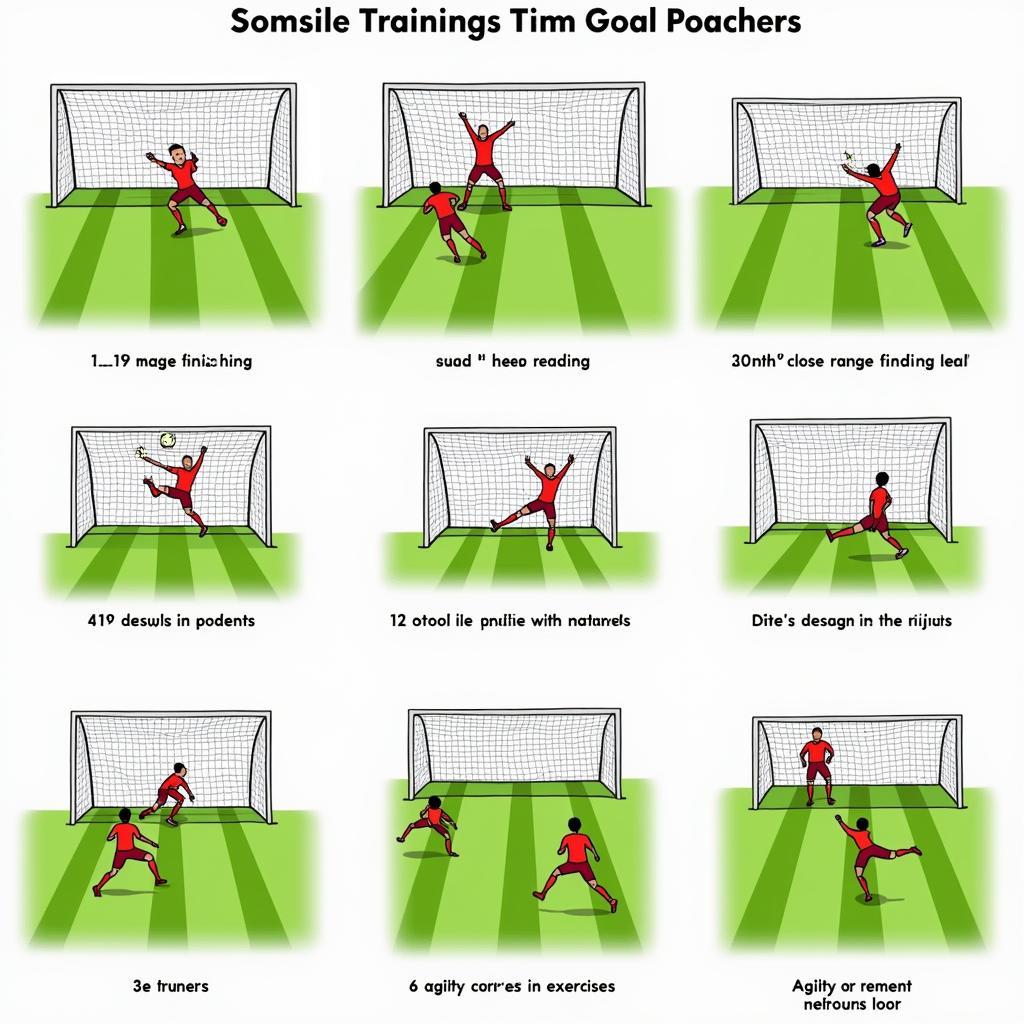Goal-Scoring Prowess: Dissecting the Art of the “Goal Poacher”
January 20, 2025The term “goal poacher” often evokes images of strikers lurking in the box, ready to pounce on any loose ball or defensive lapse. It’s a skill, an instinct, a vital ingredient in the recipe for footballing success. But what truly defines a goal poacher? What separates them from other forwards? Let’s delve into the intricacies of this crucial role, exploring the traits, tactics, and techniques that make a successful “goal poacher”.
The Defining Characteristics of a Goal Poacher
A goal poacher isn’t just about being in the right place at the right time; it’s about making it the right place at the right time. Anticipation, positioning, and an almost preternatural sense of where the ball will end up are key components of their arsenal. They’re masters of the six-yard box, thriving in the chaos and confusion that often ensues in front of goal. Their finishing can be clinical, opportunistic, or even unorthodox, but the end result is always the same: the ball hitting the back of the net.
Key Skills of the Elite Goal Poacher
- Positioning: The ability to read the game and anticipate the flow of play is paramount. Goal poachers are often seen ghosting into space, unmarked and ready to strike.
- Finishing: Whether it’s a deft touch, a powerful header, or a scrappy finish, goal poachers have the knack for converting chances, even from difficult angles or under pressure.
- Composure: In the heat of the moment, when the stakes are high, a goal poacher remains calm and collected, making split-second decisions that can change the course of a game.
- Off-the-Ball Movement: Constant movement is crucial. They’re not static targets; they’re constantly probing, shifting, and creating space for themselves or their teammates.
This can be likened to the meticulous craftsmanship found in some traditional trades. For example, nghề thủ công ở huê cầu requires a similar level of precision and dedication.
How Do Goal Poachers Train?
Becoming a prolific goal poacher isn’t simply about natural talent; it’s about honing specific skills through dedicated practice. Repetitive drills focusing on finishing from close range, heading practice, and exercises designed to improve off-the-ball movement are essential. Analyzing game footage, studying the movements of other successful goal poachers, and working closely with coaches to refine tactical awareness are also crucial components of their development.
 Goal Poacher Training Drills
Goal Poacher Training Drills
The Evolution of the Goal Poacher
The role of the goal poacher has evolved over time. While traditional goal poachers primarily operated within the confines of the penalty area, modern interpretations of the role often see them dropping deeper, linking up play, and creating chances for themselves or their teammates. Players like myself strive to be more than just finishers; we aim to be complete forwards who can contribute to all aspects of the attack. Some players even choose a different path entirely, such as the story of those who đi tu cầu thủ.
What Makes a Modern Goal Poacher?
- Versatility: Today’s goal poachers need to be more than just finishers. They need to be comfortable with the ball at their feet, able to dribble, pass, and create opportunities.
- Physicality: Strength, speed, and agility are essential attributes. Modern defenders are faster and stronger than ever before, so goal poachers need to be able to hold their own in physical battles.
- Tactical Awareness: Understanding the nuances of different formations, the movements of teammates, and the weaknesses of opponents is crucial for maximizing their effectiveness.
The path from aspiring footballer to seasoned professional is long and challenging. The choices we make along the way shape our careers. Consider the different paths taken, even in areas like infrastructure development, such as the cầu thanh đa bắc sang thủ đức.
The Importance of the Goal Poacher
In the high-stakes world of professional football, goals are the currency of success. Goal poachers, with their innate ability to find the back of the net, are invaluable assets to any team. Their contributions can be the difference between victory and defeat, between a title-winning season and a disappointing campaign.
“A goal poacher’s mindset is all about efficiency. It’s about maximizing every opportunity, no matter how small,” says renowned football coach, Johan Cruyff (fictional quote).
“The best goal poachers possess a sixth sense,” adds legendary striker, Ronaldo Nazario (fictional quote). “They know where the ball is going to be before it even gets there.”
In conclusion, the “goal poacher” is a vital role in football, requiring a unique blend of skill, instinct, and dedication. From their clinical finishing to their intelligent movement, they are the players who often decide the outcome of matches. The evolution of the role demands even greater versatility and tactical awareness, making the modern goal poacher a true force to be reckoned with.
FAQ
- What is a goal poacher in football?
- How can I improve my goal-poaching skills?
- Who are some famous goal poachers?
- What are the key attributes of a successful goal poacher?
- How has the role of the goal poacher changed over time?
- What is the importance of positioning for a goal poacher?
- How does a goal poacher contribute to a team’s success?
For those interested in other footballing topics, check out this article on cầu thủ ganso. Or, if you’re looking for a unique perspective, you might enjoy this piece on cầu giông thủ đức.
Need support? Contact us 24/7: Phone: 0396443476, Email: [email protected] or visit us at 23 Tháng 3, Đắk Nia, Gia Nghĩa, Đắk Nông, Việt Nam.